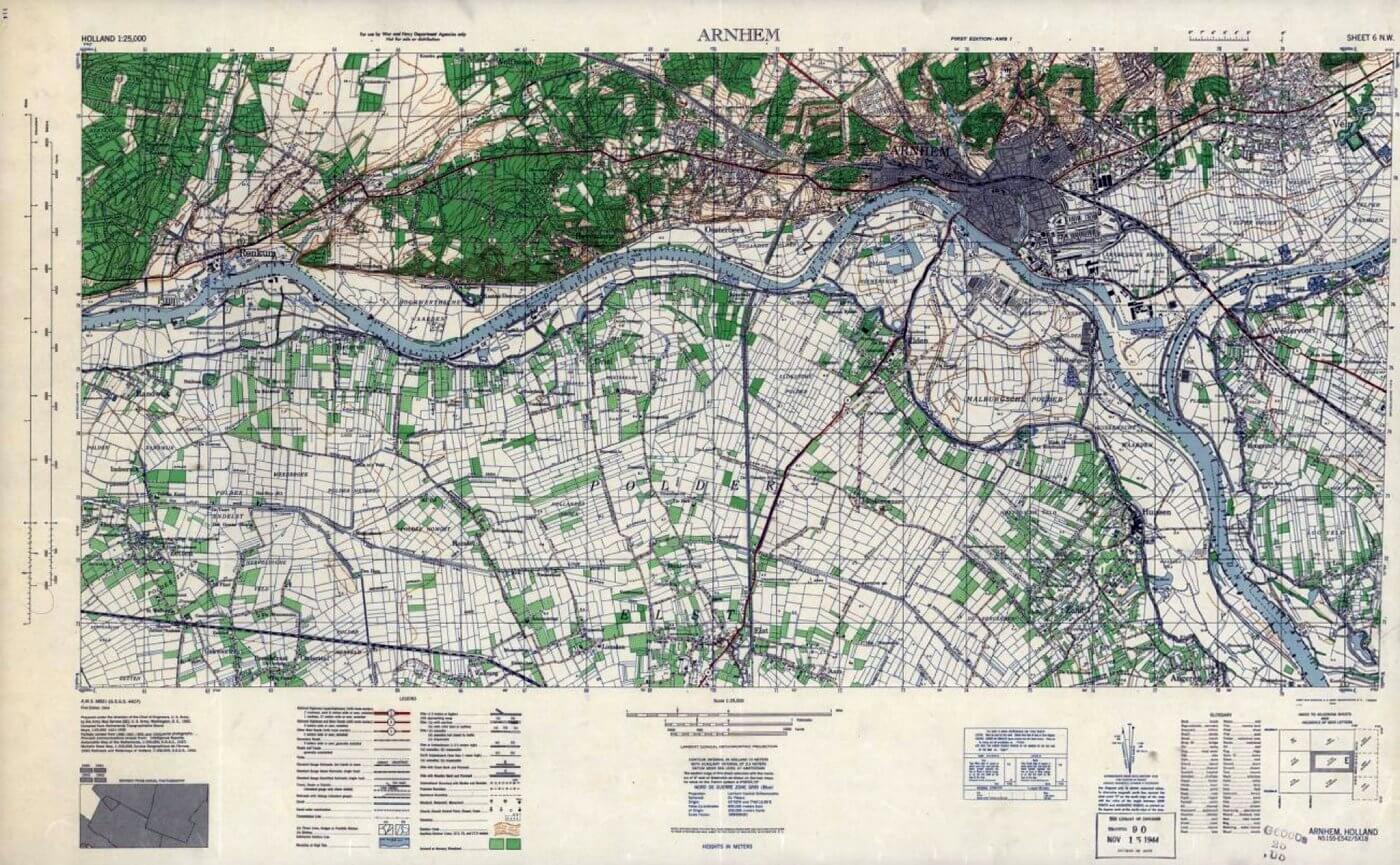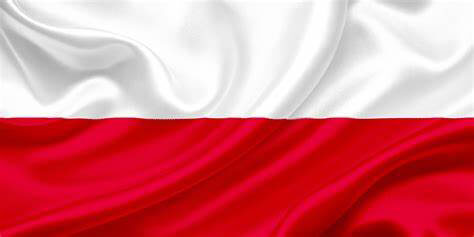| September 17th, 1944 – September 26th, 1944 |
| Operation Market Garden |
| Objectives |
- Land south of the Arnhem road bridge
- Support the 1st Airborne Division in holding the bridge for a minimum of 48 hours.
- Link up with the advancing ground forces of the 30th Corps.
| Operational Area |
Arnhem Area, The Netherlands
| Allied Forces |
- 1st Airborne Division
- 1st Polish Independent Parachute Brigade
- 52nd, (Lowland) Airlanding Division
| Axis Forces |
- II SS-Panzer-Corps
- 9. SS-Panzerdivision “Hohenstaufen”
- 10. SS-Panzerdivision “Frundsberg”
- Kampfgruppe von Tettau
- Feldkommandantur 642
- SS-Unterführerschule Arnheim
- Bataillon I
- Bataillon II
- Bataillon III
- SS-Polizei Schule
- SS-Ausbildungs und Ersatz Bataillon 4
- Bataillon I
- Bataillon II
- SS-Wach Battalion 3
- Schiffsturm Abteilung 10
- Schiffsturm Abteilung 6/14
- Fliegerhorst Battalion 2
- Fliegerhorst Battalion 3
- Artillerie Regiment 184
- Sicherheit Regiment 42
- Kampfgruppe Knoche
- Sicherheit Regiment 26
- Bataillon I
- Bataillon II
- MG Bataillon 30
- FlaK Abteilung 688
- Bataillon I
- Bataillon II
- Hermann Göering Schule Regiment
- Hermann Göering Schule Regiment
- Bataillon I
- Panzer Abteilung 224
- SS Ersatz Abteilung 4
- Deelen Airfield FlaK Kompanie
- Wach Kompanie
- Reichs AD
- Hermann Göering Schule Regiment
- Sicherheit Regiment 26
- Kampfgruppe Kraft
- SS-Panzer Grenadier Ausbildungs und Ersatz Bataillon 16
- Schwerepanzer Abteilung 506
- Schwerepanzer Kompanie Hummel
- StuG Abteilung 280
- Artillerie Regiment 191
- Bataillon I
- Bataillon II
- Bataillon III
- SS-Werfer Abteilung 102, Hauptsturmfürer Nickmann
- Kampfgruppe Brinkmann
- Kampfgruppe Bruhn
- Kampfgruppe Harder
- Sperrverband Harzer
- MG Bataillon 47
- Marine Kampfgruppe 642
- Kampfgruppe Schörken
- Kampfgruppe Kauer
- SS-Abteilung “Landstrum Nederland”
- Kampfgruppe Knaust
- Ersatz Abteilung Bocholt
- Panzer Kompanie Mielke
- Kampfgruppe Spindler
- FlaK Abteilung Swoboda
- Kampfgruppe von Allworden
- Kampfgruppe Weber
| Lack of information |
The news reaches Sosabowski and his team through the newspapers: the Allied Airborne Army has landed in the Netherlands. Reports confirm that the 1st Airborne Division is engaged in intense fighting in the Arnhem area, with some units having managed to reach the bridge. However, they only control one end of the bridge, while the Germans still hold the other, leading to fierce combat between both sides. The situation at Arnhem remains uncertain, and it becomes clear that the battle is far from being won.
Additional information brought by Lieutenant-Colonel George Stevens offers Sosabowski a somewhat clearer picture of the situation, but it remains far from comprehensive. One thing becomes increasingly evident—any element of surprise has been lost. The longer the operation drags on, the more advantageous it becomes for the Germans. Time is now firmly on their side, and any further airborne drops into Arnhem will no longer catch the enemy off guard. The Germans will be fully prepared and ready to respond, making any subsequent jumps far more dangerous and less effective.
| First Polish Glider Landings |
During the morning, at 11:00 hours, ten Airpseed Horsa gliders take off from Royal Air Force Manston airfield. Each glider is carrying essential personnel and equipment for the 1st Polish Independent Parachute Brigade. Seven Horsas transport No. 3 Troop of the Anti-Tank Battery, including five 6-pounder anti-tank guns, along with troops, jeeps, trailers, and associated supplies. Another 2 Horsas carry the heavy equipment for the Engineer Company, while the final Horsa brings the advance party of the Brigade Headquarters. Among the men are Polish war correspondent, Marek Swiecicki, Captain A. Mackowiak, Polish liaison officer to the British artillery and Captain L. Zwolanski was GSO3 (Intelligence) at the Headquarters 1st Polish Independent Parachute Brigade attached to 1st Airborne Division Headquarters.
At last, the order comes to board the gliders. The doors slam shut, the steps are removed, and the gliders are hitched to a tractor that pulls them towards the runway. The weather is heavy and overcast, with large raindrops sliding down the sides of the glider, adding to the grey, impenetrable gloom that surrounds the crew. As takeoff approaches, visibility is so poor that the ground can’t even be seen, English soil that has become as familiar to them as their own after years of war and exile. Moved by the moment, they turn their focus back to studying maps and operational plans to settle their nerves.
Once airborne, the dense clouds and thick air make the flight smooth, with no sensation of movement, no bumps, no sudden rises or dips. The first indication of flight comes when the glider makes a slight drop, just as the first rays of sunlight break through. Over the Channel now, the mist and England fall behind. Sunbeams begin to flood the sky, first one, then many more, bringing light to the scene. The gliders starts to sway gently from side to side, reminiscent of a carousel ride.
As the sunlight fully reveals the scene, the sky ahead is filled with aircraft, Stirlings and Horsas stretching out in rows, creating what feels like an endless avenue of planes. One of the crew attempts to count them but is soon overwhelmed by their numbers, which blur together like telegraph poles seen from a speeding train. The scale of the operation becomes apparent, sparking both excitement and concern about whether there will be enough space to land.
As the Dutch coast nears, the sound of anti-aircraft fire greets the gliders, though it is light and seemingly ineffective, more of an afterthought than a real threat. The crew laughs it off, removing their life jackets, changing into combat overalls, and even taking a moment to enjoy the tea they brought from the airfield. Soon after, they light their last cigarettes before fastening their harnesses as the pilots instruct. Below, the landscape reveals forests and canals glittering in the sunlight, with barely any signs of roads or human activity. The green fields appear duller compared to the vibrant English countryside, and the forests seem larger, the terrain broken by wide stretches of land and numerous windmills visible even from high above.
When the gliders finally separates from the towing aircraft, silence fills the cabin. After the constant roar of engines, the sudden quiet is almost shocking, though quickly replaced by the distant sounds of gunfire rising from the ground, a stark reminder of the dangers that lie ahead.
In Oosterbeek, the men of the 21st Independent Parachute Company, who land first on the initial day to secure the landing zones, are given instructions to guide in the incoming gliders. They set up the radio beacon for the aircraft on the water tower.
Since the landings are delayed and do not occur at the scheduled time, they activate the radio beacon intermittently to signal the aircraft. Additionally, once the landings take place, the British are instructed to immediately run to the gliders and relay orders to the Polish forces. These orders direct the Poles not to advance towards Arnhem, but instead to fall back and regroup at Oosterbeek.
From 15:00 hours on, the Polish gliders start landing. The landings are rough and abrupt, with the gliders bouncing across the field before coming to a sharp halt. The crews move swiftly, breaking open the doors and leaping out, as per their training. With weapons at the ready, they set up a Bren gun aimed at the nearby forest, where enemy gunfire becomes more frequent. The enemy is only a few hundred metres away. Meanwhile, troop carriers emerge from other gliders, racing toward the forest to engage the threat.
Nearby, another glider catches fire, quickly engulfed in flames, but its crew escapes through the smoke, shouting, “All okay!” Others aren’t as fortunate, with some landing dangerously close to the forest edge, facing more immediate danger. The open field presents its own risks, enemy planes could appear at any moment, and their absence so far is unsettling. The Luftwaffe was expected to challenge the flight over the sea or at least over the Dutch coast, but so far, there has been no sign of them. Despite the quiet skies, caution remains essential.
Despite these unfortunate cases, all 10 Polish gliders successfully land on Landing Zone X at Renkum, delivering their cargo as planned. There are no casualties reported upon landing. The weather is now perfect, with the sun shining as though it were the middle of summer, despite it being mid-afternoon.
No. 3 Troop of the Polish Anti-Tank Battery intents to move along the road by the railway towards Wolfheze, with the initial intent of advancing towards Arnhem, as the objective was to secure the eastern part of the city. However, upon receiving information from the British that Arnhem is not yet accessible, the Polish troops change course and head towards Oosterbeek. The Commander of the 1st Airborne Division directs the troop to set up a defensive perimeter in a specific area near Hotel Hartenstein. The guns are roughly positioned around the junction of Oranjeweg, Utrechtseweg, and Sonnenberglaan. In total, 18 Polish soldiers, along with designated glider pilots and five anti-tank guns, are set up in the defensive positions. The advance party of the 1st Polish Independent Parachute Brigade Headquarters and the Polish liaison officers also make their way to Hotel Hartenstein to meet up with headquarters of the 1st Airborne Division.
| Preperations to go into Action |
While all this was going on, at the airfields of Royal Air Force Spanhoe and Royal Air Force Saltby, the afternoon sees ground crews supporting the 1st Polish Independent Parachute Brigade working tirelessly to load para-containers. These containers are packed with essential items such as ammunition, medical supplies, and food, all intended to be dropped to the troops once the airborne assault is underway.
That evening, anticipating it to be his last in Great Britain for some time, Major-General Sosabowski sends an official report to Polish Headquarters, informing them that he and his brigade are preparing to depart.
| Multimedia |


